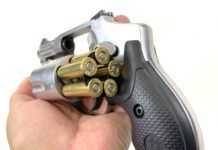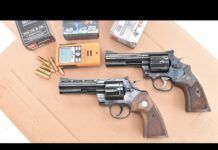Among the most popular revolvers is the double-action 357 Magnum, and shooters can confirm this because Smith & Wesson recently reintroduced the Combat Magnum and Ruger has introduced a seven-shot GP100 357 Magnum. Those companies wouldn’t (purposefully) add a couple of dogs to their inventories. Shooters like the 4-inch 357 configuration because these revolvers make for excellent all-round hunting, personal defense, and target guns. Some revolver fans also favor them for concealed carry. Also, they will stand up to long-term storage and come up shooting. It is interesting that a number of special teams in Europe and the U.S. Military keep the 357 Magnum in inventory for this reason.
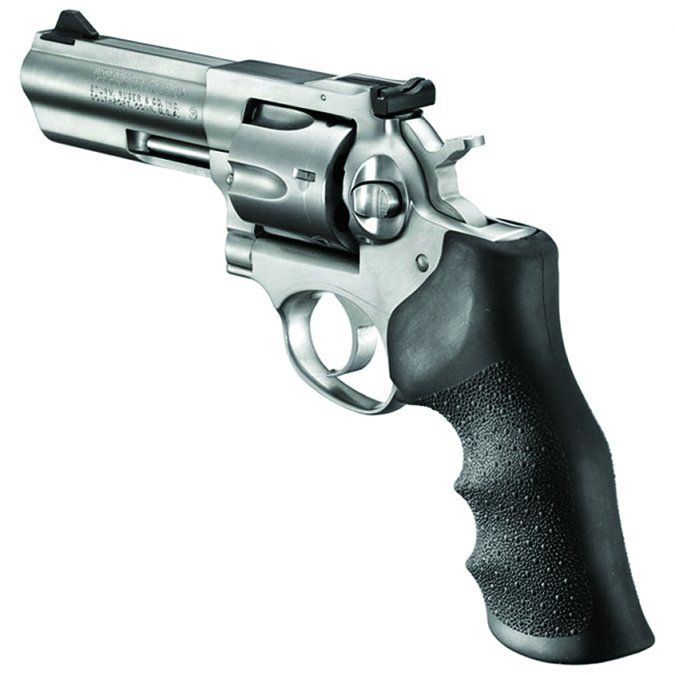
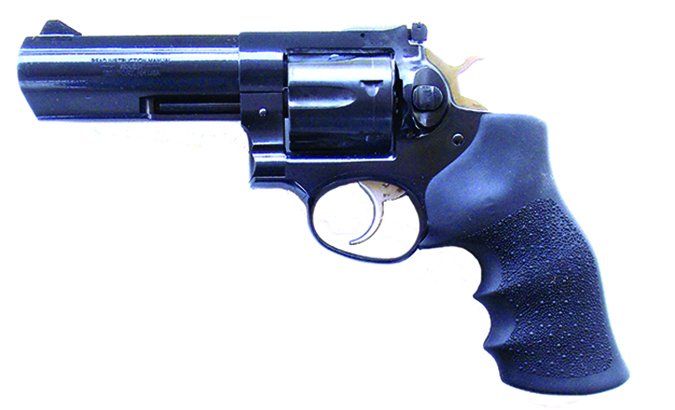
Readers have asked us to revisit the category with an eye toward picking a used wheelgun that could save them a couple hundred bucks — that is, they wanted us to go bargain hunting. So we purchased a quartet of used revolvers from major brands that included adjustable sights with 4-inch barrels capable of serving for some types of hunting and for home and auto defense. In other words, we wanted the best go-anywhere do-anything revolver, not a specialized concealed-carry type, such as the Ruger SP101. The 357 Magnum is a great defense cartridge and also a fine pest and varmint round in accurate handguns. With the proper loads, the cartridge is versatile and will take deer-sized game at modest distances. Also, a major advantage of the 357 Magnum is the ability of the revolver to chamber 38 Special +P or stouter cartridges, but as important, softer-shooting loads as well. A practice regimen of twenty 38 Specials for every Magnum is recommended by most trainers. We elected to test the revolvers with both 38 Special and 357 Magnum loads and also to include handloads that have proven themselves. Interestingly, the two Ruger GP100 revolvers, one in stainless steel and one in blued finish, showed practically the same firing line and absolute accuracy performance. However, the two Smith & Wesson revolvers, also one blued and one stainless, had considerably different characteristics.
The test firearms started with the Smith & Wesson Model 19 Combat Magnum, $800 used. This particular Combat Magnum came with a display case and a knife with matching serial number — pretty neat, but also pricey. The Combat Magnum name gave way to the Model 19 designation in 1957, the year when Smith & Wesson changed from names to model numbers. It has always sold well with a 4-inch barrel, in either bright blue or nickel finishes. Other barrel lengths have appeared as well, with 6-inch (1963) and 2.5-inch (1966) barrels showing up as mainline production guns. There is also a rare variation of the Model 19 with a 3-inch barrel. The Model 19 was dropped from the line in 1999 as police agencies migrated to semi-autos, but Smith & Wesson reintroduced the Model 19 Classic (4.25-inch barrel) at the 2018 NRA Annual Meetings & Exhibits (Model No. 12040, MSRP $826). There’s also a Performance Center Model 19 Carry Comp No. 12039 (MSRP $1092) with a tritium front night sight, custom wood and synthetic boot grips, and a 3-inch PowerPort vented barrel for recoil management. The revolver features a trigger overtravel stop and Performance Center tuned action. We previously tested a less-expensive Model 19-4 nickel-finish variant in the March 2015 issue, giving it an A grade.
Range Data
| Black Hills Factory New 125-gr. JHP | Ruger GP100 Stainless | Ruger GP100 Blued | S&W Model 19 | S&W Model 66 | Taurus Model 66 |
| Average velocity | 1455 fps | 1439 fps | 1422 fps | 1416 fps | 1388 fps |
| Muzzle energy | 587 ft.-lbs. | 574 ft.-lbs. | 561 ft.-lbs. | 556 ft.-lbs. | 534 ft.-lbs. |
| Smallest group | 1.3 in. | 1.5 in. | 1.9 in. | 2.1 in. | 2.9 in. |
| Largest group | 1.9 in. | 2.4 in. | 2.5 in. | 2.6 in. | 3.6 in. |
| Average group | 1.7 in. | 2 in. | 2.2 in. | 2.3 in. | 3.2 in. |
| Federal Premium 140-gr. Barnes Exp. HP | |||||
| Average velocity | 1346 fps | 1360 fps | 1299 fps | 1324 fps | 1290 fps |
| Muzzle energy | 563 ft.-lbs. | 574 ft.-lbs. | 524 ft.-lbs. | 544 ft.-lbs. | 517 ft.-lbs. |
| Smallest group | 1 in. | 1.5 in. | 1.8 in. | 2.2 in. | 2.2 in. |
| Largest group | 1.5 in. | 2.2 in. | 2.5 in. | 2.8 in. | 2.9 in. |
| Average group | 1.3 in. | 1.8 in. | 2.1 in. | 2.5 in. | 2.5 in. |
| DoubleTap 158-gr. Nosler JHP | |||||
| Average velocity | 1222 fps | 1190 fps | 1176 fps | 1188 fps | 1169 fps |
| Muzzle energy | 523 ft.-lbs. | 496 ft.-lbs. | 485 ft.-lbs. | 495 ft.-lbs. | 479 ft.-lbs. |
| Smallest group | 1.3 in. | 1.5 in. | 1.2 in. | 1.6 in. | 2.5 in. |
| Largest group | 1.7 in. | 2.6 in. | 1.8 in. | 2 in. | 3.1 in. |
| Average group | 1.5 in. | 2 in. | 1.5 in. | 1.8 in. | 2.8 in. |
| We averaged the results from three five-shot groups for accuracy. We recorded velocity with a Competition Electronics Chronograph. Range for velocity testing is 10 feet. Temperature at the time of testing ranged from 94 to 103 degrees. All groups were fired with an O.H. Products Bullshooter Pistol Rest at 25 yards (#666-100-013WB, $58 from Brownells.com). Ammo sources: DoubleTap 158-gr. Controlled Expansion Nosler JHP 357M158N ($23.74/20 from DoubleTapAmmo.com); Federal Premium 140-gr. Barnes Expander Hollow Point P357XB1 ($30/20 from LuckyGunner.com); and Black Hills 125-grain Jacketed Hollow Point D357N2 ($24.72/20 from CheaperThanDirt.com). | |||||
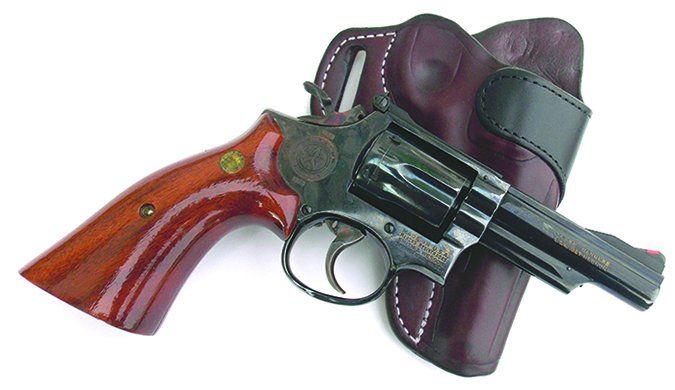
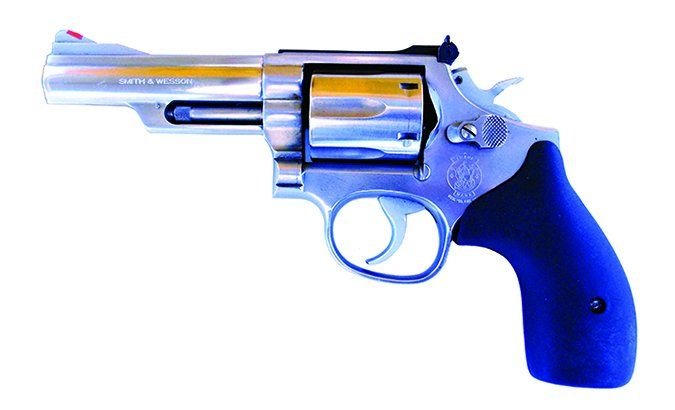
Next up was a silver-skinned copy of Model 19, the stainless-steel Smith & Wesson Model 66 Combat Magnum 38 Special +P/357 Magnum, $420. In July 1971 Smith & Wesson announced its first stainless-steel 357 Magnum, the Model 66. Like the blued Model 19, the Model 66 was a favorite of everyday cops who wanted a Model 19 that was rust resistant. The 4-inch-version, like the one we tested, was the most popular. It stayed in continuous production until 2005, when Smith & Wesson dropped the Model 66 at its 66-7 iteration. Then production on the handgun was restarted in 2014, with the 66-8 unit, which is still in the catalog as Model No. 162662, with a suggested retail of $849. In the June 2001 issue, we tested a 2.5-inch-barrel M66, saying of it: “Even with the small problems we encountered, this is a superior weapon, and few revolvers can match this incarnation of the snubnosed K-frame.” In the April 2002 issue, we tested a 4-inch Smith & Wesson M66-2, $219. That Smith & Wesson Model 66 was gauged to be in 95 percent condition, which would bring a Blue Book price of $300 at the time. It earned a “Buy It” recommendation.
Then came Ruger’s GP100 KGP-141 38 Special +P/357 Magnum, $500. In the August 2006 issue, we said a stainless Ruger GP100 No. KGP-141 was Our Pick, because “it functioned with the most consistency and would likely offer the most durability. The front sight can be easily replaced, and the adjustable rear sight was built to last. The ejector rod was shrouded, lockup was braced, and our GP100 shot all ammos well.” In the December 2006 Guns of the Year issue, we named that gun a “Best in Class” choice.
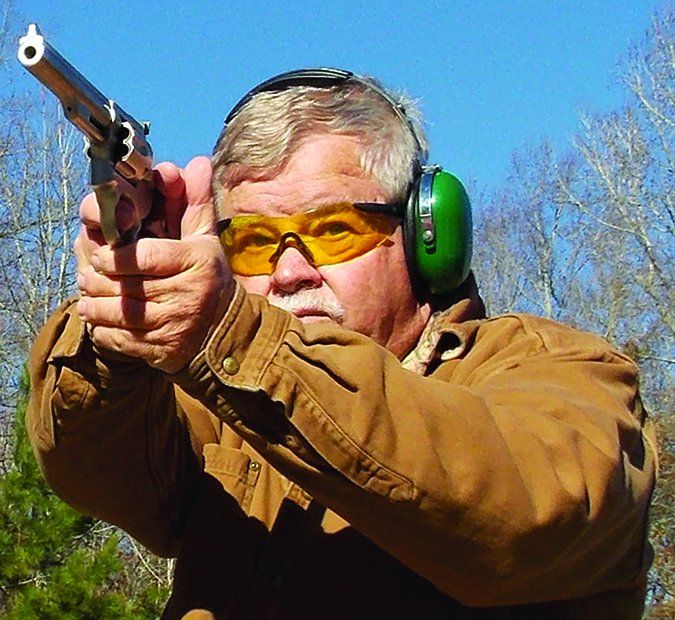
The Ruger GP100 GP-141 38 Special +P/357 Magnum, $480, is the fourth 4-inch handgun in the test. The GP100 line was introduced in 1985 as a second generation of the Ruger double-action, exposed-hammer revolvers intended to replace Ruger’s Security-Six, Service-Six, and Speed-Six lines. It was made stronger so it could fire an unlimited number of full-power 357 Magnum rounds. All GP100 revolvers use solid-steel sidewalls (no sideplates) and frame widths with extra steel in critical areas that support the barrel. This makes them rugged and dependable, but also makes them heavy. In the line, the missing “K” in the model-number designation means this unit is blued. The current manufacture issue is Model 1702 (MSRP $769), with a 4.2-inch barrel and Hogue Monogrips. We have not previously tested the blued model.
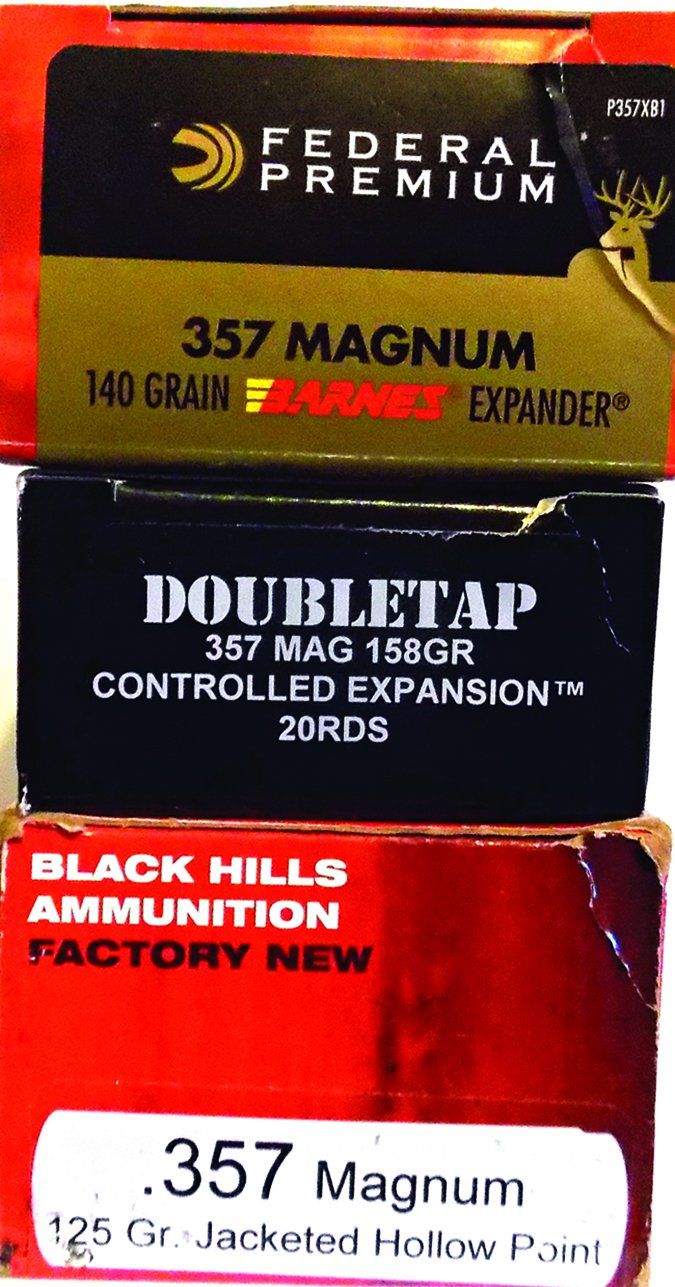
We also tested a Taurus Model M66 38 Special +P/357 Magnum, $325, at the same time as the others, but because of its longer barrel, we cover it on a separate page. The Taurus 66 357 Magnum, we figured, might give us the best of both worlds. It is a K-frame revolver like the Combat Magnum, but a 6-inch barrel might give us good velocity and accuracy. That turned out not to be the case.
For orientation and combat-course work, we fired two handloads through the revolvers, the first being a range load of the Hornady 125-grain XTP and 7.5 grains of Titegroup for 1250 fps. This isn’t a full Magnum load, but it is powerful and accurate. When we used this load over the combat course, in most cases we saw the front post simply hang on the target as we worked the double-action trigger. We also fired another handload in 38 Special, comprised of the Oregon Trail 158-grain semi-wadcutter over enough WW231 powder for 950 fps. For our range data table, we fired three 357 Magnum commercial loads: factory new Black Hills 125-grain Jacketed Hollow Point D357N2, Federal Premium 140-grain Barnes Expander Hollow Point P357XB1, and DoubleTap’s 158-grain Controlled Expansion Nosler Jacketed Hollow Point 357M158N.
Smith & Wesson Model 19 Combat Magnum Texas Ranger Edition 38 Sp. +P/357 Mag., $800
GUN TESTS GRADE: B
The used Combat Magnum came with a display case and a knife with matching serial number — pretty neat, but also pricey. It is light enough to be carried concealed with a proper high-riding holster and makes a good combination for field and range use. The Model 19 Classic 12040 is the current production gun.
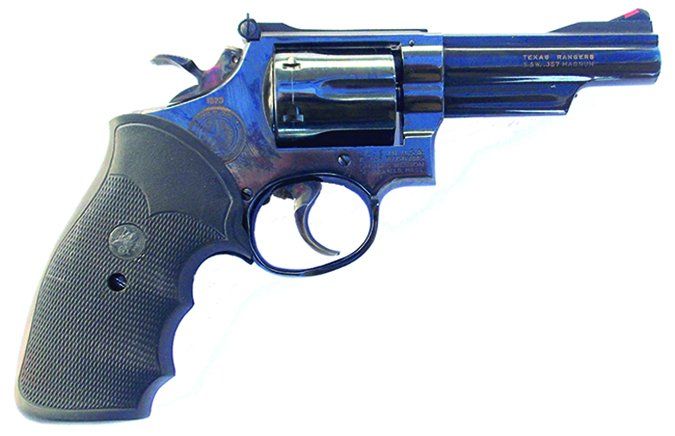
| ACTION | Double-action revolver, K frame |
| OVERALL LENGTH | 9.25 in. |
| OVERALL HEIGHT | 5.6 in. |
| MINIMUM WIDTH | 1.52 in. |
| WEIGHT UNLOADED | 35 oz. |
| WEIGHT LOADED | 37 oz. |
| BARREL | 4 in. long, blued steel |
| CYLINDER CAPACITY | 6 |
| FRAME | Blued steel |
| FRONT STRAP HEIGHT | 2.5 in. |
| BACK STRAP HEIGHT | 4.3 in. |
| GRIPS | S&W Smooth Combat Grips |
| GRIP THICKNESS | 1.5 in. |
| GRIP CIRCUMFERENCE | 5.5 in. |
| FRONT SIGHT | Post |
| REAR SIGHT | Black blade adjustable |
| SIGHT RADIUS | 5.5 in. |
| TRIGGER PULL WEIGHT (SA) | 4.2 lbs. |
| TRIGGER PULL WEIGHT (DA) | 13 lbs. |
| TRIGGER SPAN (SA) | 2.3 in. |
| TRIGGER SPAN (DA) | 2.7 in. |
| WARRANTY | None |
| TELEPHONE | (800) 331-0852 |
| WEBSITE | Smith-Wesson.com |
| MADE IN | USA |
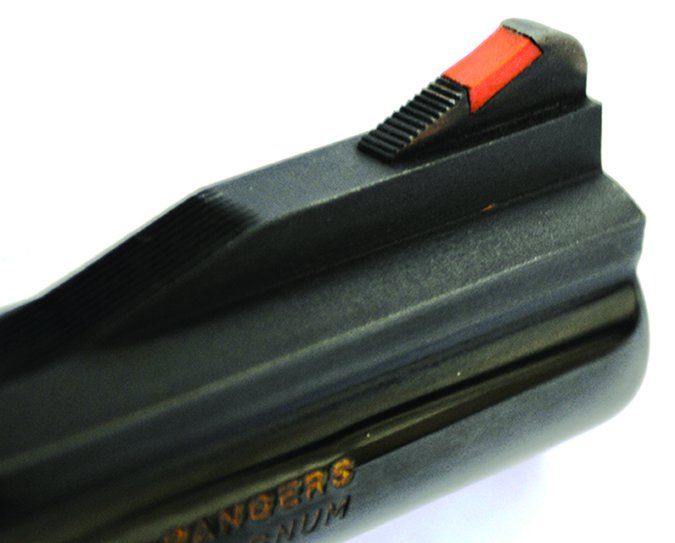
We paid a lot for this revolver, but most Texas Ranger commemorative revolvers seem to be going for $1200 or more, so in that sense, we found a bargain. The revolver came with a presentation case and a nice custom-grade knife with a motif that matched the revolver. The rater who found it argued that it isn’t much more than a new Model 66, but then it isn’t stainless and doesn’t have the new transfer-bar ignition the Combat Magnum does in its present edition. The revolver is very well finished in faultless blueing. The adjustable sights and red-insert front sight are good examples of all-round sights for the revolver.
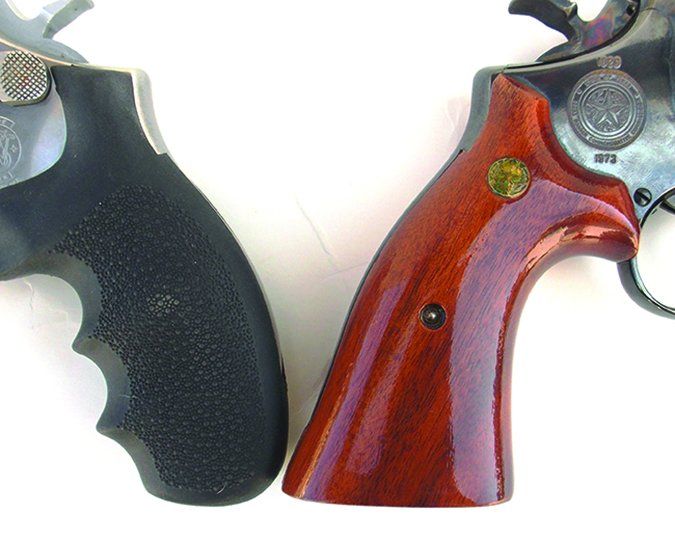
The Combat Magnum featured a wide combat trigger and target hammer as well as an internal trigger stop, in contrast to the thin trigger of the Model 66, giving us a chance to compare. The revolver was fitted with a nice set of Smith & Wesson smooth combat-type stocks. A useful addition, inspired by the famous shooter and writer Bill Jordan, was a cut-out trigger guard. At one time, revolvers were butchered by cutting away the trigger guard to gain fast access to the trigger. But such weakened guards could actually bend and prevent the trigger from moving. Jordan felt that the partially cut away trigger guard was superior, and we agree. The Model 19 Combat Magnum Texas Ranger revolver is the only handgun we are aware of turned out from the factory with this addition.
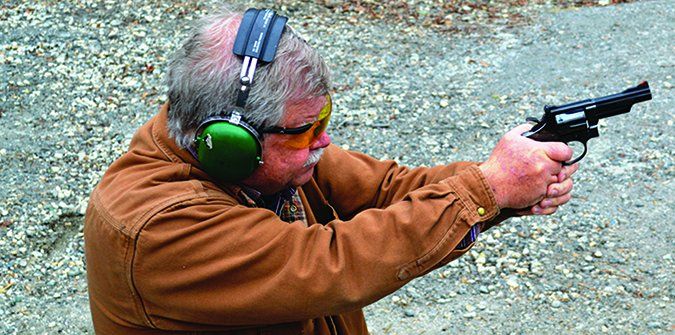
Though pricey, the likes of this revolver cannot be purchased new for any price. This revolver is very smooth, although it has been fired but little. The double-action trigger press is the lightest of any tested. It is perhaps more smooth than light. The gold accents are well done, and considering the age of the revolver, they bonded well to the blued-steel revolver. There was only slight wear on the gold from handling. On the firing range, the Model 19 Combat Magnum gave good to excellent results. However, half the raters found the grip slipped in their hand when firing heavy loads. This wasn’t noticeable with the 38 Special loads. In a lucky stroke, we tried the ill-fitting square-butt Pachmayr grips that had been on the Model 66 on the blue-steel Model 19 Combat Magnum and found control greatly improved. Of course they fit this square-butt revolver well. In combat firing, the two Combat Magnum revolvers, as expected, were neck and neck, with the round-butt-configured revolver pulling away from the blue-steel revolver for speed from leather. We used an Avenger type holster from Nelson Holsters and found the speed to be excellent with either. The wide trigger of the Combat Magnum allowed better control for those staging the shot for maximum accuracy. The stainless revolver with its thin trigger was faster. In absolute accuracy, the blue-steel Model 19 had a slight, but discernible, advantage over the Model 66 when slowing down a bit for a deliberate shot. The grips and the fit for single-action fire may have been responsible.
Our Team Said: We have no doubt that the Smith & Wesson Model 19 Combat Magnum Texas Ranger Edition revolver is a good handgun that would serve its owner well. However, it wasn’t as accurate as the stainless Ruger GP100 with two loads, and the Model 66 is better suited to personal carry. The Texas Ranger Edition is also a lot more expensive than the others. That doesn’t really leave a spot for us to recommend it.
Smith & Wesson Model 66 Combat Magnum 38 Special +P/357 Magnum, $420
GUN TESTS GRADE: B+
This Combat Magnum has the advantage of stainless-steel construction, a very smooth action, and a round-butt configuration very seldom seen on the 4-inch-barrel Combat Magnum. The round-butt revolver handles well, and the whole package is attractive.
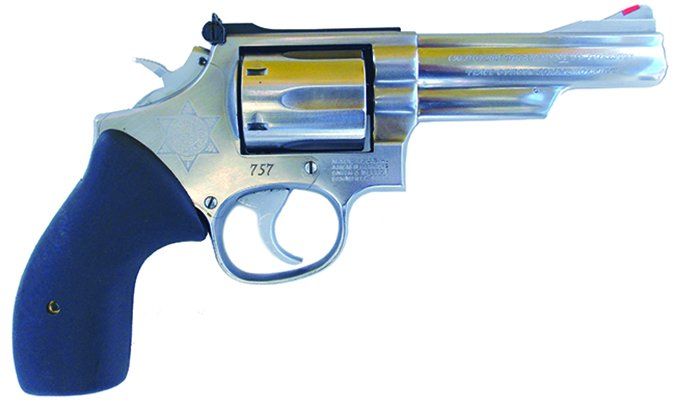
| ACTION | Double-action revolver, K frame |
| OVERALL LENGTH | 9.25 in. |
| OVERALL HEIGHT | 5.6 in. |
| MINIMUM WIDTH | 1.52 in. |
| WEIGHT UNLOADED | 34.5 oz. |
| WEIGHT LOADED | 36.5 oz. |
| BARREL | 4 in. long, stainless steel |
| CYLINDER CAPACITY | 6 |
| FRAME | Stainless steel |
| FRONT STRAP HEIGHT | 2.5 in. |
| BACK STRAP HEIGHT | 4.3 in. |
| GRIPS (Hogue) | 1.5 in. |
| GRIP CIRCUMFERENCE | 5.2 in. |
| FRONT SIGHT | Post |
| REAR SIGHT | Adjustable |
| SIGHT RADIUS | 5.5 in. |
| TRIGGER PULL WEIGHT (SA) | 3.8 lbs. |
| TRIGGER PULL WEIGHT (DA) | 13 lbs. |
| TRIGGER SPAN (SA) | 2.2 in. |
| TRIGGER SPAN (DA) | 2.5 in. |
| WARRANTY | None, used gun |
| TELEPHONE | (800) 331-0852 |
| WEBSITE | Smith-Wesson.com |
| MADE IN | USA |
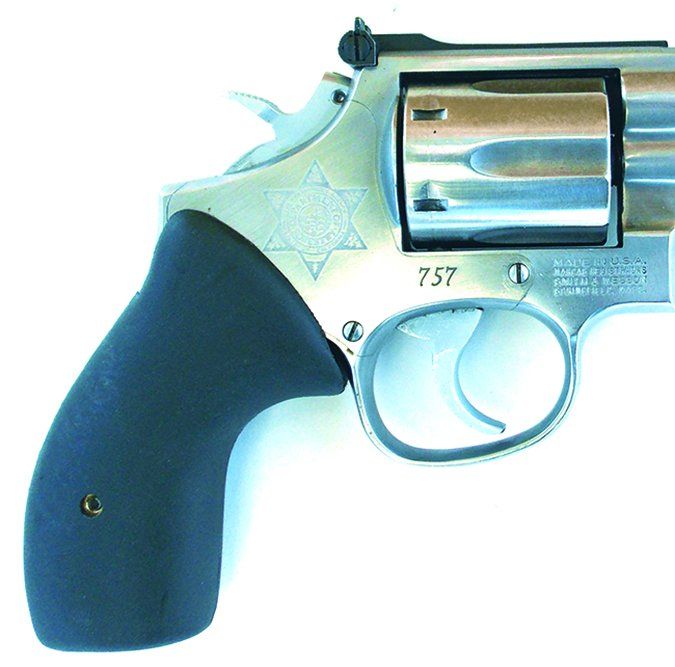
We felt lucky to find one of these used at a pawn shop, and in good condition. The 4-inch-barrel Model 66 stainless steel 357 Magnum revolver was marked “California Department of Natural Resources” and wore the California state emblem as a commemorative, not an issue, revolver. At the pawn shop it wore a set of square-butt Pachmayr grips that did not fit its round-butt frame correctly. There was no box or original grips, so the collector value wasn’t intact.
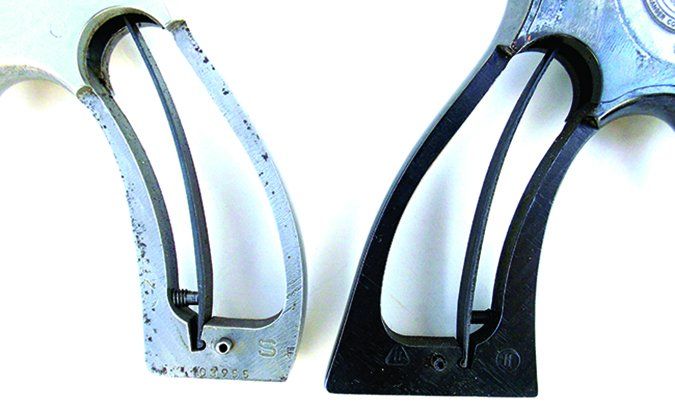
We added a set of Hogue MonoGrips prior to starting the test, and we also tried a set of Precision Gun Specialties S&W Hideout Revolver Grips ($19 to $22 from Brownells.com), in our experiments at improving concealed carry. These are molded-nylon black grips in smooth and textured finishes for the J-frame as well as finger-groove smooth and textured styles for the J-frame. The same textures are are also available for the K- and L-frame Smith & Wesson revolvers. The best compromise in concealed carry and control, we feel, was the Hogue MonoGrip, while the hideout-type grips have much merit for maximum concealment. The Model 66 in round butt is comparatively rare. All new Smith & Wesson revolvers are round butt and conversion grips make the revolvers square butt, a good move for ease of manufacturing. The finish had a few scratches.
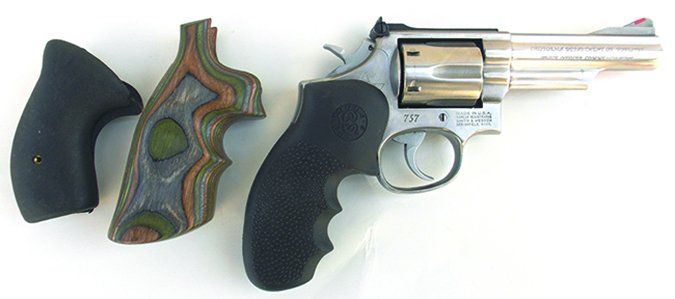
The revolver seemed smooth and reliable in operation. The Smith & Wesson features a red insert front sight we really like. There is also a fully adjustable rear sight and the ejector rod is shrouded. We liked the handling of the round-butt revolver. It seems to transfer more recoil to the shooter’s hand than the square-butt revolver, but the grip seems firm and we were able to draw very quickly with the round-butt revolver. The trigger reach from the grip to the trigger face was slightly shorter with the round-butt configuration, something worth considering because this made double-action shooting a bit better. For single-action fire, the Model 19 revolver, with its large grips and wide trigger, was superior, but for combat shooting, the round butt and thinner trigger were better. The double-action trigger was smooth and well broken in. The single-action trigger press was a crisp 3.8 rounds. Hit probability for the first-shot double action was high. On the firing range, this much lighter revolver was not as controllable as the Ruger GP100s with 357 Magnum loads, but it wasn’t terrible either.
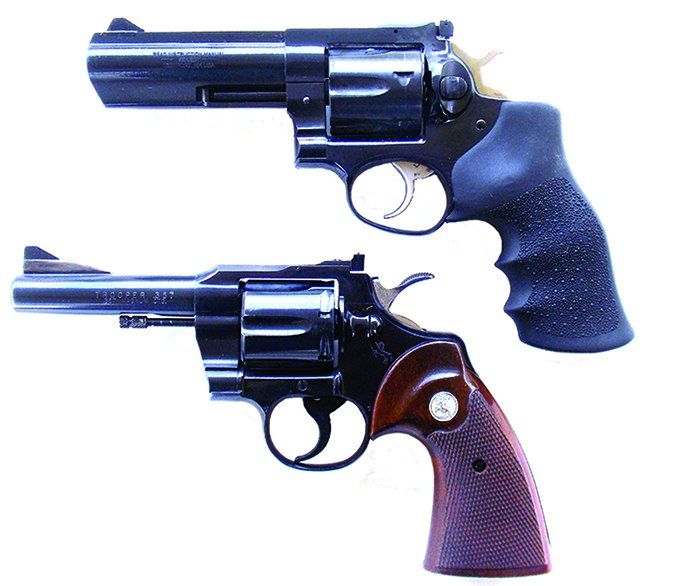
After 50 full-power Magnums, you might feel the sting in your hands more so than with the Ruger GP100s. The pain with the GP100s might be in the lumbar after a long hike. The M66 was a better-handling revolver than either the Taurus or the Smith & Wesson M19 Combat Magnum, we thought. It was certainly accurate enough for personal defense and even hunting at moderate range, but it wasn’t the most accurate with any load. Fired from the benchrest, this round-butt K-frame revolver was the hardest kicker.
Our Team Said: The stainless GP100 was more accurate than the Model 66 with all loads, and the Smith & Wesson Model 19 Combat Magnum beat it with one load as well. So the Model 66 might be third on the list for sport shooting and even home defense. But for concealed carry, the round-butt configuration is the best of the test. The round butt conceals better and feels good in the hand in double-action fire.
Ruger GP100 KGP-141 38 Sp. +P/357 Mag., $500
GUN TESTS GRADE: A
The stainless-steel GP100 is an excellent performer in all categories: accuracy, smoothness, control, and velocity. It is a big gun, which is comfortable to fire, so the size is a tradeoff.
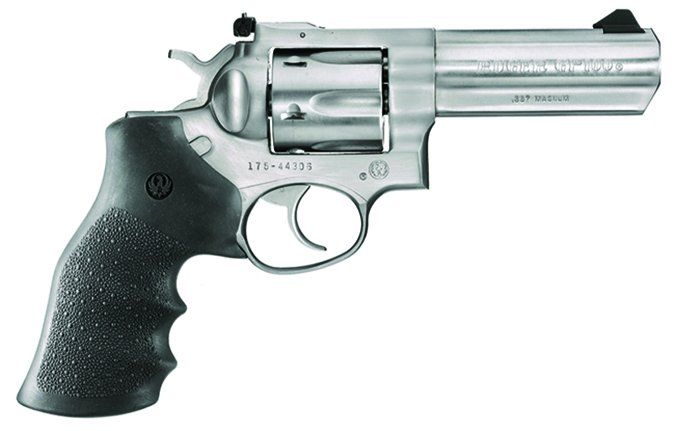
| ACTION | Double-action revolver |
| OVERALL LENGTH | 9.5 in. |
| OVERALL HEIGHT | 6.1 in. |
| MINIMUM WIDTH | 1.56 in. |
| WEIGHT UNLOADED | 38 oz. |
| WEIGHT LOADED | 40 oz. |
| BARREL | 4 in. long, stainless steel |
| CYLINDER | 6 |
| FRAME | Stainless steel |
| FRONT STRAP HEIGHT | 2.5 in. |
| BACK STRAP HEIGHT | 4.5 in. |
| GRIPS | Hogue black rubber |
| GRIP THICKNESS | 1.2 in. |
| GRIP CIRCUMFERENCE | 4.8 in. |
| FRONT SIGHT | Post |
| REAR SIGHT | Adjustable |
| SIGHT RADIUS | 5.5 in. |
| TRIGGER PULL WEIGHT (SA) | 4.1 lbs. |
| TRIGGER PULL WEIGHT (DA) | 14 lbs. |
| TRIGGER SPAN (SA) | 2.5 in. |
| TRIGGER SPAN (DA) | 2.8 in. |
| WARRANTY | None |
| TELEPHONE | (336) 949-5200 |
| WEBSITE | Ruger.com |
| MADE IN | USA |
| STATE APPROVED | CA, MA |
Ruger GP100 GP-141 38 Sp. +P/357 Mag., $480
GUN TESTS GRADE: B+
The blued GP100 doesn’t quite perform on par with the stainless version, and the stainless finish is easier to maintain, so the other Ruger gets our pick as an all-round choice. And the stainless M66 is the better carry choice, so that doesn’t leave much room for this fine blued wheelgun.
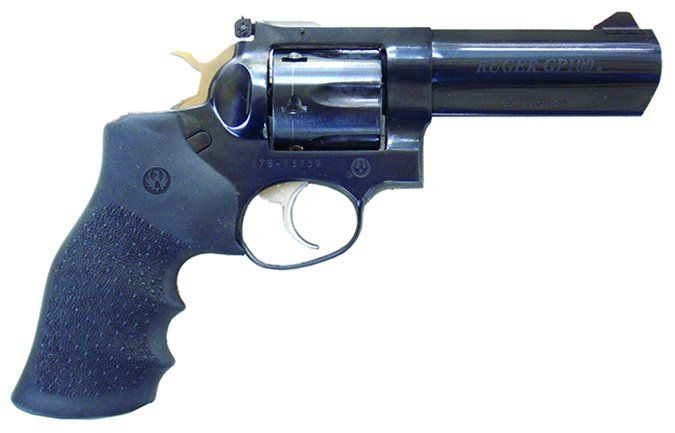
| ACTION | Double-action revolver |
| OVERALL LENGTH | 9.5 in. |
| OVERALL HEIGHT | 6.1 in. |
| MINIMUM WIDTH | 1.5 in. |
| WEIGHT UNLOADED | 38.1 oz. |
| WEIGHT LOADED | 40.1 oz. |
| BARREL | 4 in. blued steel |
| CYLINDER CAPACITY | 6 rounds |
| FRAME | Blued steel |
| FRONT STRAP HEIGHT | 2.5 in. |
| BACK STRAP HEIGHT | 4.5 in. |
| GRIPS | Hogue black rubber |
| GRIP THICKNESS | 1.2 in. |
| GRIP CIRCUMFERENCE | 4.8 in. |
| FRONT SIGHT | Post |
| REAR SIGHT | Adjustable |
| SIGHT RADIUS | 5.5 in. |
| TRIGGER PULL WEIGHT (SA) | 4.1 lbs. |
| TRIGGER PULL WEIGHT (DA) | 14 lbs. |
| TRIGGER SPAN (SA) | 2.5 in. |
| TRIGGER SPAN (DA) | 2.8 in. |
| WARRANTY | None |
| TELEPHONE | (336) 949-5200 |
| WEBSITE | Ruger.com |
| MADE IN | USA |
| STATE APPROVED | CA, MA |
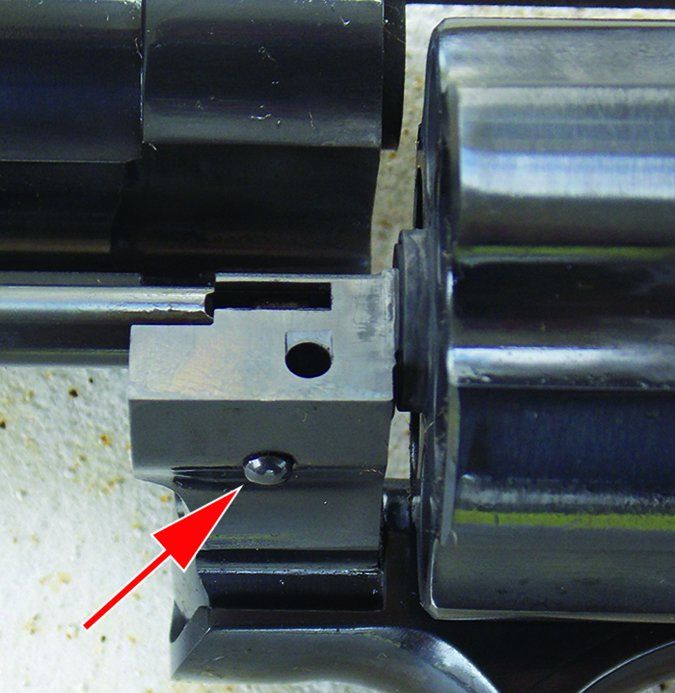
We cover these two together because, at the range, we saw very little difference in performance. Some shooters prefer the look of blued steel and others, stainless. For us, however, stainless is a plus for hard use. The mechanical operation of each gun was tight, identical in fact. Each double-action trigger was smooth, and the single-action triggers broke at 4.5 pounds. The GP100s feature adjustable rear sights and post front sights. The revolvers have a shrouded ejector rod. The lockup on the cranes featured a ball and detent that worked well in keeping the pistols tight.
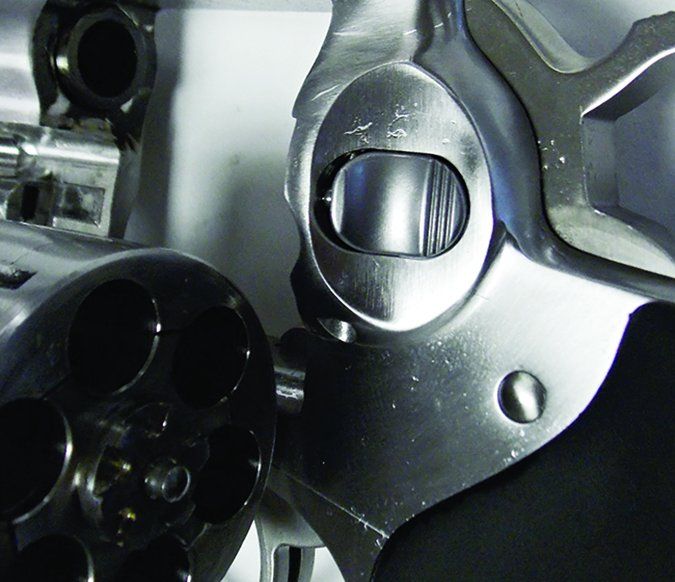
The grips fit most hands well. We liked the pebble-grained Hogue grips a lot. The double-action press was smooth in both cases, and the single-action presses were crisp. It is interesting to explore the differences in revolvers and in this case, both were similar.
The GP100s were even more controllable with the 38 Special, and the pieces were very accurate firing at small targets at known and unknown ranges. These were controllable and comfortable handguns. Next came the firing for accuracy stage, firing from the bench using every possible advantage short of a machine rest. We never use as machine rest as this eliminates the very important factor of how the interface between man and firearms works together.
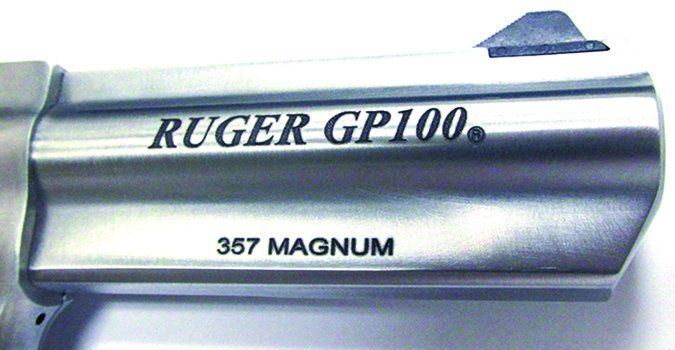
Results were excellent. The Federal 140-grain load provided one 1-inch 25-yard group in the stainless GP100, and the stainless Ruger outshot everything except the Smith & Wesson M19, which matched it with the DoubleTaps. The blued GP100 was 0.3 inch behind the stainless Ruger with the Black Hills and a half inch less accurate than the stainless gun with the Federal Premiums and DoubleTaps.
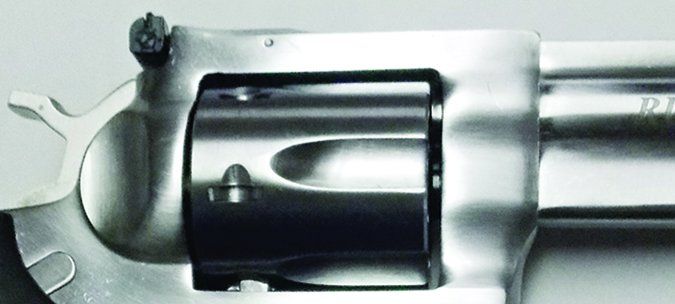
Our Team Said: We found the blued and stainless GP100s from Ruger to be controllable, accurate, and rugged. The GP100 stainless is the Best Buy of the test and the best performer, even though it cost more than two of the other three revolvers tested. Also, we feel that when you can have stainless in a hard-use handgun, you should. Still, either of the GP100 revolvers would be a good buy, with the blued one coming in second behind its stablemate.
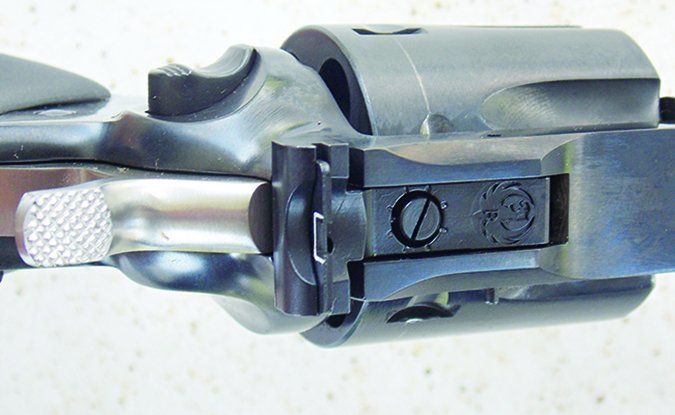
Written and photographed by Gun Tests Staff, using evaluations from Gun Tests team testers.



























